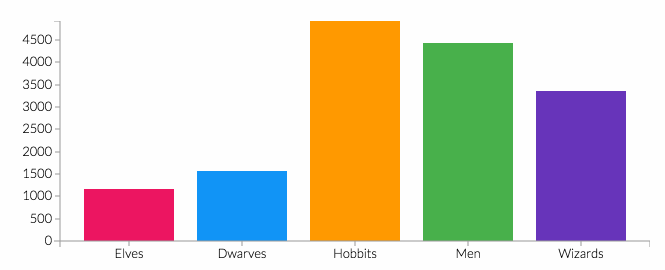ANALISIS SISTEM MANAJEMEN LINGKUNGAN UIN MALANG MENUJU GREEN CAMPUS: PERSPEKTIF EMS ISO 14001
DOI:
 https://doi.org/10.32478/evaluasi.v6i2.940
https://doi.org/10.32478/evaluasi.v6i2.940
Keywords:
Green Campus, ISO 14001, Environmental Management System, Sustainability.Abstract
Downloads
References
Bansal, P. & Hunter, T. (2003), “Strategic explanations for the early adoption of ISO 14001”, Journal of Business Ethics, Vol. 46 No. 3, pp. 289-99.
Bizerril, M., Rosa, M. J., Carvalho, T., & Pedrosa, J. (2018). Sustainability in higher education: A review of contributions from Portuguese Speaking Countries. Journal of Cleaner Production, 171, 600-612.
Choi, Y. J., Oh, M., Kang, J., & Lutzenhiser, L. (2017). Plans and living practices for the green campus of Portland State University. Sustainability, 9(2), 252.
González-Benito, J., Lannelongue, G., & Queiruga, D. (2011). Stakeholders and environmental management systems: a synergistic influence on environmental imbalance. Journal of Cleaner Production, 19(14), 1622-1630.
Indriantoro, N., & Supomo, B. (2002). Metodologi penelitian bisnis: untuk akuntansi & manajemen.
ISO. (2015). The ISO Survey of Management System Standard Certifications – 2014. [Online]. Available: www.iso.org/iso/iso_survey_executive-summary.pdf
Jackson, S. L. (1997). The ISO 14001 implementation guide: creating an integrated management system (Vol. 3). John Wiley & Sons.
Liyin, S., Hong, Y. and Griffith, A. (2006), “Improving environmental performance by means of empowerment of contractors”, Management of Environmental Quality: An International Journal, Vol. 17 No. 3, pp. 242-57.
MacDonald, J. P. (2005). Strategic sustainable development using the ISO 14001 Standard. Journal of cleaner production, 13(6), 631-643.
Murtiyarini (2014) ‘Sustainable Green campus’ http://murtiyarini.staff.ipb.ac.id/2014/06/11/sustainable-green-campus/. Dapat diakses di : http://murtiyarini.staff.ipb.ac.id/2014/06/11/sustainable-green-campus/.
Poder, T. (2006), “Evaluation of environmental aspects significance in ISO 14001”, Environmental Management, Vol. 37 No. 5, pp. 732-43.
Pojasek, R.B. (2008), “Framing your lean-to-green effort”, Environmental Quality Management, Vol. 18 No. 1, pp. 85-93.
Poksinska, B., Dahlgaard, J.J. and Eklund, J.A.E. (2003), “Implementing ISO 14000 in Sweden: motives, benefits and comparisons with ISO 9000”, International Journal of Quality & Reliability Management, Vol. 20 Nos 4/5, pp. 585-606.
Price, T. J. (2005). Preaching what we practice: experiences from implementing ISO 14001 at the University of Glamorgan. International Journal of Sustainability in Higher Education.
Savely, S. M., Carson, A. I., & Delclos, G. L. (2007). An environmental management system implementation model for US colleges and universities. Journal of Cleaner Production, 15(7), 660-670.
Tiyarattanachai, R., & Hollmann, N. M. (2016). Green campus initiative and its impacts on quality of life of stakeholders in Green and Non-Green campus universities. SpringerPlus, 5(1), 1-17.
Viebahn, P. (2002). An environmental management model for universities: from environmental guidelines to staff involvement. Journal of cleaner production, 10(1), 3-12.
Whitelaw, K. (2012). ISO 14001 environmental systems handbook. Routledge.
Wimala, M., Akmalah, E., & Sururi, M. R. (2016). Breaking through the barriers to green building movement in Indonesia: Insights from building occupants. Energy Procedia, 100, 469-474.
Yin, R. K. (2009). Case study research: Design and methods (Vol. 5). Sage.
Downloads
Published
Issue
Section
License
Authors hold and retain copyright and grant the journal right of first publication with the work simultaneously licensed under a http://creativecommons.org/licenses/by-sa/4.0 that allows others to share the work with an acknowledgment of the work's authorship and initial publication in this journal.

This work is licensed under a Creative Commons Attribution-ShareAlike 4.0 International License.
How to Cite
Similar Articles
- Nurul Hidayah, Murtando, Muhammad, STRATEGIC MANAGEMENT IN SUSTAINABLE EDUCATION THROUGH INTEGRATION OF ENVIRONMENTAL EDUCATION IN THE NATIONAL CURRICULUM , Evaluasi: Jurnal Manajemen Pendidikan Islam: Vol. 9 No. 1 (2025): Evaluasi-Edisi Maret
- Hasan Baharun, Unzilah Khomairotusshiyamah, Quality Control in HR Management: Ensuring Accreditation in Higher Education , Evaluasi: Jurnal Manajemen Pendidikan Islam: Vol. 9 No. 1 (2025): Evaluasi-Edisi Maret
- setiawan setiawan, Lailatul Qodariyah, Pengembangan Manajemen Perpustakaan sebagai pusat informasi dan pendidikan di STAIMA Al-Hikam Malang , Evaluasi: Jurnal Manajemen Pendidikan Islam: Vol. 3 No. 2 (2019): EVALUASI-Edisi SEPTEMBER
- Fitratul Isma, Lailatul Munawwaroh, IMPLEMENTASI MANAJEMEN BERBASIS MADRASAH DALAM PENINGKATAN MUTU MADRASAH (STUDI KASUS DI MI MAARIF GONDOSULI MUNTILAN) , Evaluasi: Jurnal Manajemen Pendidikan Islam: Vol. 3 No. 1 (2019): EVALUASI-edisi MARET
- Zaedun Na'im, SEJARAH PERKEMBANGAN MANAJEMEN LEMBAGA PENDIDIKAN ISLAM , Evaluasi: Jurnal Manajemen Pendidikan Islam: Vol. 5 No. 1 (2021): EVALUASI-Edisi Maret
- DWITRI STEPANILI, EVALUASI PENDIDIKAN PERSPEKTIF ISLAM (ANALISIS TAFSIR Q.S QAFF AYAT 17-18) , Evaluasi: Jurnal Manajemen Pendidikan Islam: Vol. 3 No. 2 (2019): EVALUASI-Edisi SEPTEMBER
- Saifur Rizal, SERVANT LEADERSHIP DALAM IMPLEMENTASI NILAI-NILAI TRILOGI DAN PANCA KESADARAN SANTRI , Evaluasi: Jurnal Manajemen Pendidikan Islam: Vol. 3 No. 2 (2019): EVALUASI-Edisi SEPTEMBER
- Anisa Wahyuni, M Ihsan Alhusaeni Hijaz, Irawan Irawan, Tata Kelola Pembiayaan Pendidikan di Pesantren Modern , Evaluasi: Jurnal Manajemen Pendidikan Islam: Vol. 5 No. 1 (2021): EVALUASI-Edisi Maret
- Ismatul Izzah, ANALISIS MANIFESTASI IMPLEMENTASI SCHOOL BASED MANAGEMENT PADA PENGEMBANGAN PROJEK PENGUATAN PROFIL PELAJAR PANCASILA (P5) DI LEMBAGA PENDIDIKAN , Evaluasi: Jurnal Manajemen Pendidikan Islam: Vol. 8 No. 1 (2024): Evaluasi-Edisi Maret
- Zaedun Na'im, TINJAUAN TEORITIS MANAJEMEN MUTU PENDIDIKAN , Evaluasi: Jurnal Manajemen Pendidikan Islam: Vol. 8 No. 1 (2024): Evaluasi-Edisi Maret
You may also start an advanced similarity search for this article.
Most read articles by the same author(s)
- Alfin Mustikawan, Agus Maimun, Sugeng Listyo Prabowo, INTELLECTUAL CAPITAL IN ISLAMIC HIGHER EDUCATION: PESANTREN-BASED INSTITUTIONS , Evaluasi: Jurnal Manajemen Pendidikan Islam: Vol. 8 No. 2 (2024): Evaluasi-Edisi September













